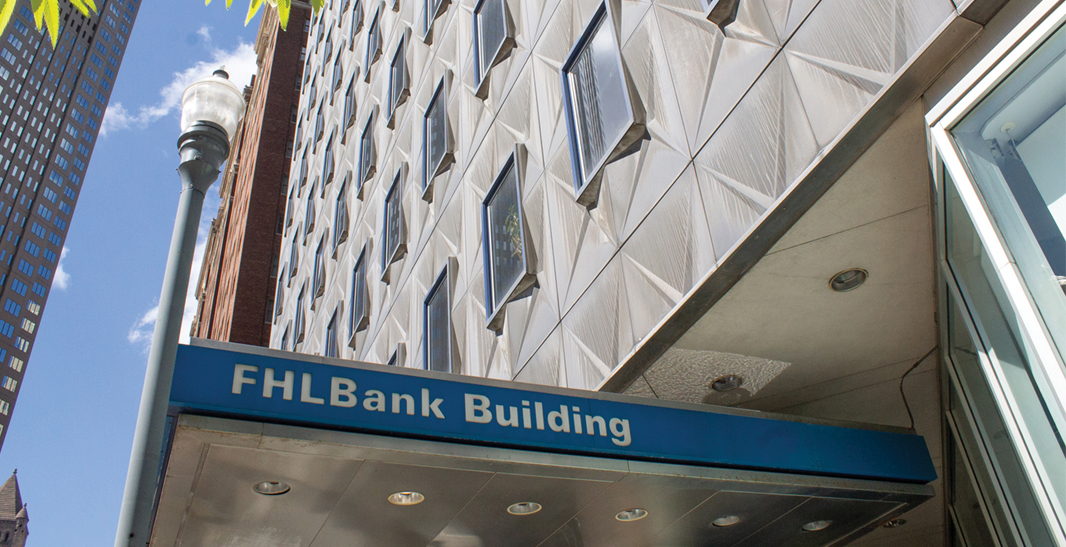Capital Management
A Needed Resource
Insurers are positioning themselves to borrow from the Federal Home Loan Bank in the event of further financial stress.

ONE OF MANY: The Federal Home Loan Bank of Pittsburgh is one of 11 FHLBanks (or Federal Home Loan Banks) located in cities across the country.
Photo courtesy of Federal Home Loan Bank of Pittsburgh
As economic turmoil grows in the United States due to the COVID-19 fallout, insurers looking for additional funds to help offset liquidity pressures may turn to the Federal Home Loan Bank. FHLBs are government-sponsored entities with implicit government backing, according to the Best's Special Report Growing FHLB Usage Expected to Be Ratings Neutral. All their lending is secured, and they buy only government guaranteed and Treasury investments, although there are still risks, particularly as related to downturns in the housing and mortgage markets, the report said.

AM Best will continue to analyze FHLB borrowings and operating leverage on a case-by-case basis to determine the leverage treatment and the appropriate risk charges as applied to our Best’s Capital Adequacy Ratio or BCAR model.
Jason Hopper
AM Best
Jason Hopper, an associate director in the industry research and analytics department at AM Best, discussed the report with AMBestTV.
Following is an edited transcript of the interview.
What are some of the dynamics behind borrowing from the Federal Home Loan Bank, and how widespread is FHLB access to the insurance industry?
Not just anyone is able to borrow from the Federal Home Loan Bank. Companies must own capital stock within it to be able to access borrowing funds. Capacity is determined by a mix of collateral and assets.
Insurers have been using the FHLB for a long time to varying degrees, and as of year end 2019 there were 471 insurance members, which was a growth of about 8% for the year.
However, FHLB access is not substantially widespread throughout the industry, as only 22% of life insurers, 6% of property/casualty, and 3% of health insurers actually have access to FHLB borrowing.
Have you seen borrowing increase in the past couple of months?
Anecdotally we have, based on a limited number of conversations with a few of the branches. I do know that demand and volume does differ from branch to branch. The branches that we talked to may experience different volumes than some other branches, but in any regard, based on the branches that we have talked to, life insurers have been comprising the majority of the new borrowed funds.
To that end, 41% of life insurers have not used any capacity at all. Obviously, they have a lot more available they can tap if needed, and along with that, 71% of property/casualty and 52% of health insurers have not used any of their borrowing capacity.
Conversely, about 7% of life insurers have maxed out their borrowings, meaning that they have no more available funds to tap. This compares to 3% for property/casualty and about 12% in the health space.
Do we have any idea of how the use of the Federal Home Loan Bank breaks down between the major U.S. insurance segments?
The life insurance sector comprises the large majority of borrowings, which has continued to uptick in 2019. Life companies make up about 80% of total insurance industry borrowings, with health and P/C comprising the remainder.
Historically, life insurers have been using FHLB borrowings as more of a spread play, where they borrow funds at a relatively low rate, invest those funds at higher rates, and make money off that spread.
However, what we've seen in the more recent borrowings, life insurers haven't been using it as more of a spread play; they've been using it more from liquidity trades, similar to historically what the property/casualty and the health companies have done.
Are there levels or types of borrowing that would be of concern to AM Best?
Life insurers, the majority of their borrowing has come through funding agreements, which I said are used more for spread plays. Funding agreements have made up 82% of FHLB borrowings at year end 2019 for life insurers.
From a leverage standpoint and treatment at AM Best, we view funding agreements, or they qualify for operating leverage treatment, if insurers demonstrate strong asset liability management, and liquidity management expertise.
Credit for operating leverage ceases once the sum of activities qualifying for operating leverage exceeds 30% of consolidated liabilities, excluding separate accounts.
In any regard, AM Best will continue to analyze FHLB borrowings and operating leverage on a case-by-case basis to determine the leverage treatment and the appropriate risk charges as applied to our Best's Capital Adequacy Ratio or BCAR model.



























